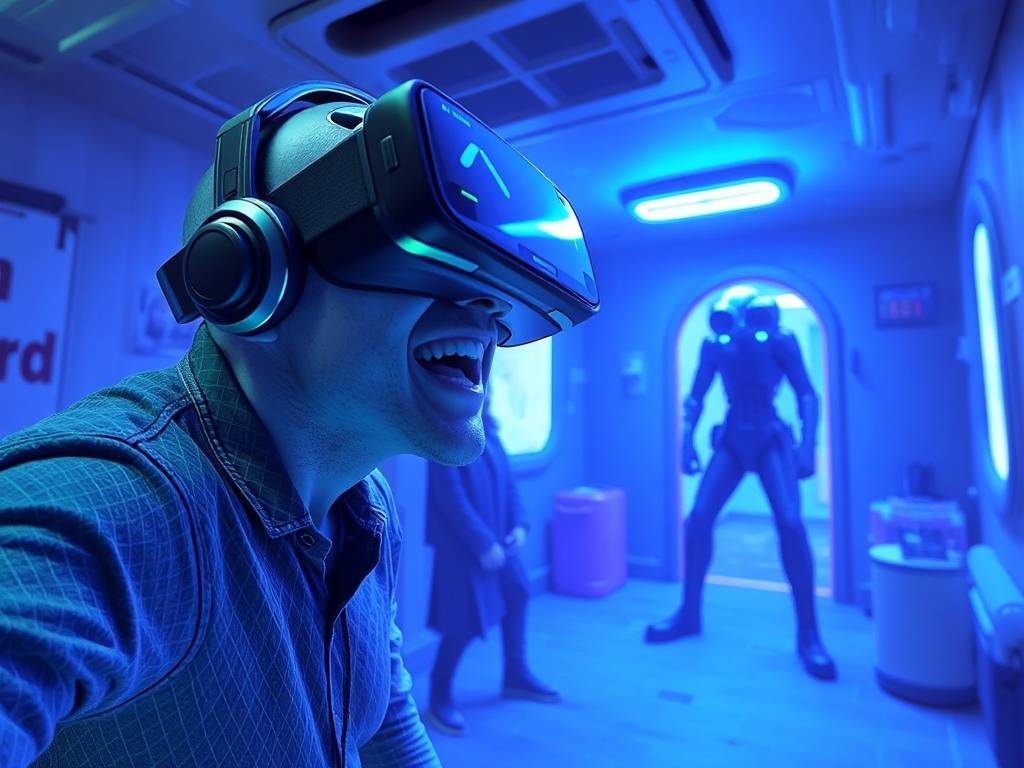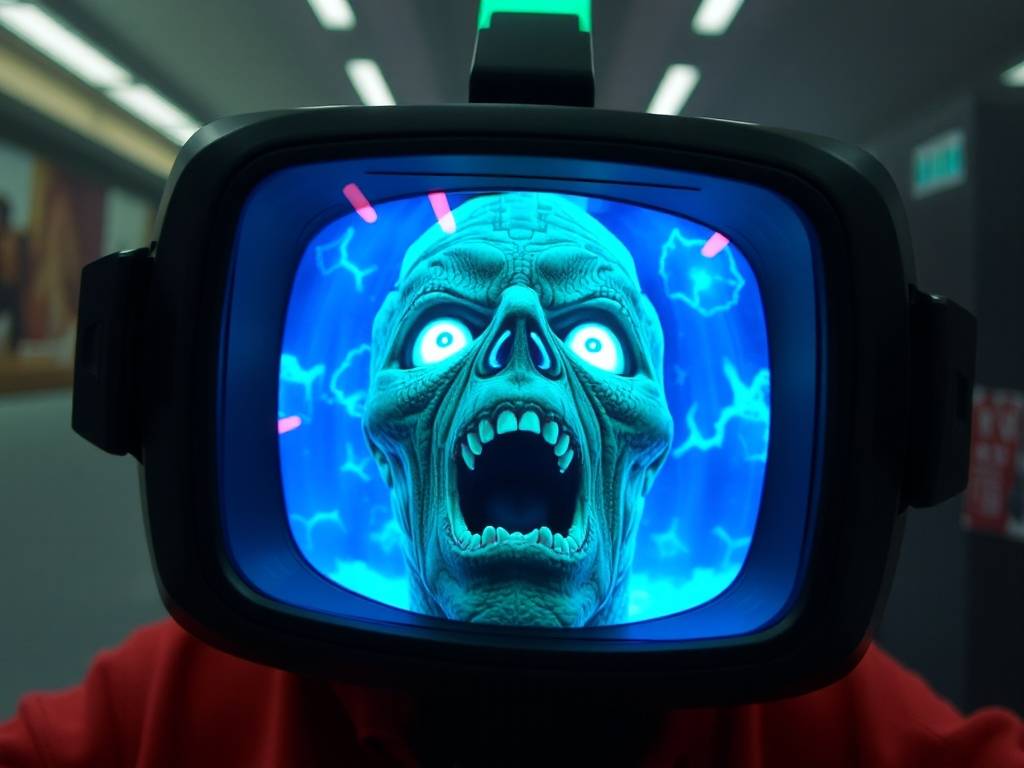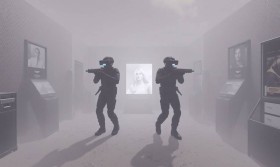Title: Beyond the Gag Reflex: How the "Revulsion Missions" Expansion for Disgust Simulator VR Explores the Psychology of Aversion
[#VRGaming] [#Psychology] [#IndieGames] [#DisgustSimulator] [#GameDesign]
The virtual reality landscape is often a canvas for the spectacular and the awe-inspiring. We soar like dragons, wield lightsabers, and explore alien worlds. Yet, a unique and provocative corner of the VR market, occupied by the aptly named Disgust Simulator VR, dares to explore the opposite end of the emotional spectrum. Instead of wonder, it cultivates revulsion. Instead of empowerment, it offers a visceral, uncomfortable intimacy with the grotesque. The recent expansion, "Revulsion Missions," is not merely a collection of new unpleasant tasks; it is a deliberate and sophisticated deep dive into the very psychology of disgust, challenging players to confront their deepest aversions in a safe, yet profoundly unsettling, virtual space.

For the uninitiated, the core concept of Disgust Simulator VR is a straightforward, if not masochistic, premise: perform tasks that are universally considered disgusting. The base game might have you cleaning a filthy public bathroom, clearing a drain clogged with matted hair, or sorting through rotten garbage. The power of VR sells the experience—the haptic feedback as you reach into a virtual mess, the stereoscopic 3D making the grime feel tangibly close, and the spatial audio of squelches and drips creating a chillingly immersive illusion. The goal was never to "win" in a traditional sense, but to endure, to complete the task despite the overwhelming urge to recoil.
The "Revulsion Missions" expansion takes this foundation and builds upon it with remarkable thematic and mechanical complexity. It moves beyond the physical and into the psychological, the social, and the existential. The expansion is structured around distinct "aversion archetypes," each designed to trigger different facets of the disgust response.
1. The Pathogen Module: A Study in Bodily Betrayal This module focuses on the most primal form of disgust: the fear of contamination and disease. One mission places you in the role of a field medic during a fictional, grotesque bio-outbreak. You are tasked with triaging patients covered in weeping, pulsating lesions. The challenge isn't just visual; you must physically apply bio-gel, which requires steady hands. If you flinch and touch the infected skin, your controller vibrates erratically, and a visual cue of contamination spreads up your virtual glove. This mission brilliantly exploits our deep-seated aversion to bodily fluids and sickness, transforming a simple medical procedure into a harrowing test of nerve against the threat of virtual infection.
2. The Moral Contamination Module: The Stain on the Soul Perhaps the most innovative part of the expansion, this module explores the concept of moral disgust. Here, the filth is not physical but ethical. One particularly powerful mission casts you as a junior employee at a dystopian data-mining corporation. Your task is to sift through the intensely personal data of unknowing citizens—private messages, health records, intimate photos—to categorize them for targeted psychological advertising. The environment is sleek and clean, but the act itself feels dirty. The mission uses subtle cues to amplify the unease: the targeted individuals' photos seem to watch you, and the sound of a rapidly beating heart pulses in the background as you invade their privacy. The disgust here is a slow burn, a cognitive dissonance between the sterile office and the morally repugnant task, leaving you feeling complicit and soiled.

3. The Entomophagy and Decomposition Module: Confronting the Cycle of Life This section tackles our aversion to death and the creatures associated with decay. Missions range from the culinary challenge of preparing a meal using various insects (from grinding live crickets to de-legged tarantulas) to the more macabre task of conducting an ecological survey in a swamp, which requires handling decomposing animal carcasses. The expansion’s physics engine shines here, with the squishy resistance of a rotting log or the brittle crunch of an exoskeleton rendered with unnerving fidelity. These missions force a confrontation with the natural processes we spend our lives sanitizing and avoiding, asking players to literally face the rot that underpins the ecosystem.
4. The Uncanny Valley of Viscera Module: The Horror Within This module plays with the disgust triggered by the violation of the body's integrity. One mission has you performing a non-emergency mechanical repair on a highly advanced, bio-mechanical android. The android’s exterior is human-like, but its interior is a labyrinth of synthetic muscles, pulsing coolant tubes, and organic-looking circuitry. You must reach deep into its chest cavity to recalibrate a core component. The disgust arises from the "uncanny valley" effect applied to anatomy—it's just familiar enough to be deeply unsettling when violated. It’s not gore for gore's sake; it's a thoughtful exploration of our discomfort with the interior of our own bodies being exposed.
The genius of "Revulsion Missions" lies in its meta-commentary. Upon completing a mission, the game presents players with a brief, factual breakdown of the psychological principles at play. It might explain how the "behavioural immune system" theorizes that disgust evolved as a disease-avoidance mechanism, or how moral disgust shares neural pathways with physical disgust. This transforms the experience from a simple shock-fest into a fascinating, interactive lecture on human emotion.
Ultimately, the "Revulsion Missions" expansion for Disgust Simulator VR is a bold and important piece of interactive art. It demonstrates that VR's potential extends beyond escapism into the realm of emotional and psychological exploration. By allowing us to safely touch, interact with, and ultimately analyze the sources of our deepest aversions, it offers a strange form of catharsis. We don't conquer disgust, but we learn to understand its contours. In making us more aware of why we recoil, the expansion provides a unique lens through which to examine our own humanity, our vulnerabilities, and the intricate systems that have evolved to protect us, both physically and morally. It is an uncomfortable, challenging, and utterly compelling journey to the very limits of what we can stomach.


















